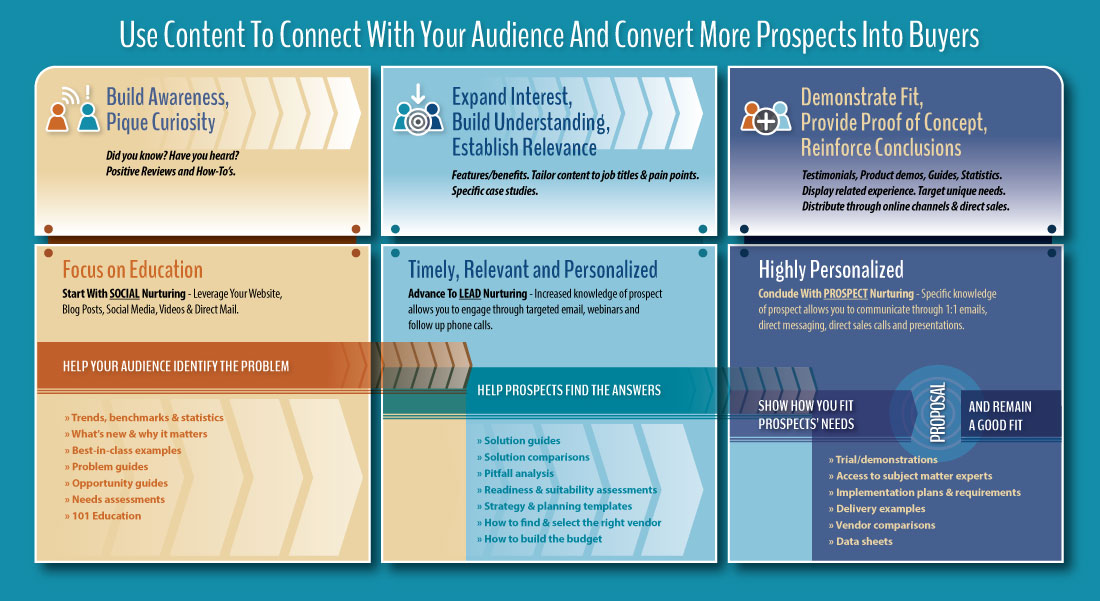Where does a well designed website and social media presence rank in your list of assets?
A well designed website, updated frequently and a corresponding social media presence is more important than your office space, new production equipment, even a new product. Why do too many companies pay such little attention to it?
According to research conducted by Marcus Nelson, former executive at Salesforce.com and founder of Addvocate, a social media enablement platform:
- 71% of enterprise purchase decisions in the United States begin with research conducted on a search engine
- 85% trust information received from blogs
- 67% trust information received from Facebook
- 73% trust information received from Twitter
- 67% of B2B buyers make buying decisions after reviewing a company's blog
In addition, according to a recent report from Fleishman-Hillard, 89 percent of consumers turn to Google, Bing or another search engine to find information on products, services or businesses prior to making purchases.
How can you afford to neglect your web site or not participate in targeted social media opportunities?
Maybe it’s not understanding the value. Maybe it’s different than how you are used to selling. Unfortunately, it leads to rationalizations like:
“Why worry about online marketing, we don’t get leads from our website.” Yeah, no kidding, if I saw your website I wouldn't be interested in doing business with your company either.
Organizations don’t build a new website or go through a major redesign with the expectation that the initial content will remain to perpetuity. But something happens. Life or in this case, business, gets in the way. Business priorities that is. And I’d argue that if you don’t dedicate the time or invest the resources, it’s as bad as allowing an important piece of production equipment to fall into a state of disrepair. We seem to intuitively know that poor quality or production inefficiencies impact business but we don’t apply that same lense for online marketing efforts. Maybe it’s because production deficiencies are easier to spot than the customers that don’t choose you, because you're not there.
Another reason online marketing falls to the backburner is that figuring out how to deal with it can be overwhelming. The content, the social media channels, nurturing leads, the resources to manage it. It doesn’t happen automatically. But neither does anything else in your business.
Take these steps:
- Review your website and jot down five areas that need updating. The thought of developing content might be intimidating but you likely have some that’s already partially developed. Think about customer presentations, training materials, board or investor meeting materials and vendor presentations that you might be able to repurpose. A content audit will help you identify viable content to publish.
- Develop an editorial calendar that defines content you will add or update in the next quarter.
- Develop a company page on LinkedIn. Companies with a LinkedIn company page are 277% more likely to generate a lead than through other social media channels like Facebook or Twitter. In the B2B world, LinkedIn is a must.
- Learn! There a ton of great sources that will help you define the direction you should take.
- Take the first step. Update your website, post on LinkedIn. Hold yourself accountable and start the process!
These are few of the steps you’ll need to take to have online success. But make sure you take the first one and get into the online marketing habit.
Can your business succeed without a strong web and social media presence? Maybe, but by not investing in these assets you’re ignoring new customers and the revenue that comes with it.
Forests that are farmed and never replenished, become wastelands. Don’t let your company get logged out.
Need assistance with your web strategy? Connect with John on LinkedIn and Twitter or visit the InterEdge Marketing website. (need links)


 Insight Delivered Directly to You Interesting topics, great offers and free marketing tools.
Insight Delivered Directly to You Interesting topics, great offers and free marketing tools.

